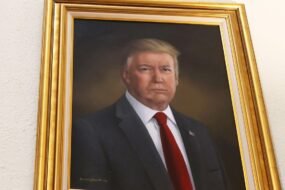
The University’s mission is to conduct science for the benefit of humanity. How does the work carried out at The Rockefeller University improve the lives of everyday people?
RL: ‘Basic scientific discoveries by Rockefeller faculty are myriad and include one of the most crucial discoveries in the history of biomedicine — that DNA is the chemical of heredity. This understanding provided a key foundation from which the last 80 years of global biomedical investigation has flowed.
‘When COVID exploded in New York City, more than a third of the university’s laboratories quickly pivoted their research to focus on understanding the biology of the SARS-CoV-2 virus, how the immune system responds to it, how the virus evolves to evade the immune response and the factors that cause severe disease. These insights were pivotal in anticipating the emergence of new variants of the virus across the pandemic. We continue to work on developing therapies that will prevent future pandemics.
‘Countless clinical applications have emerged from Rockefeller science. These include the discovery of the ABO blood groups, which directly led to testing of blood type to permit safe blood transfusions, a method that remains in universal use; the discovery of pathogens that cause many infectious diseases, and the development of effective vaccines and therapeutics that prevent or eradicate them, ranging from the first vaccine to prevent meningitis to the cure for hepatitis C; and the discovery of the hormones leptin and GLP-1 that have transformed our understanding of obesity and its treatment.’
What role do you think art and creativity plays in the progress of humanity as a whole?
RL: ‘Art is a source of inspiration that sparks the imagination and elevates the spirit. The university’s 16-acre campus is a verdant and art-filled oasis of tranquillity amidst the intensity of New York City. Early in David Rockefeller’s tenure as Chairman of the Board of The Rockefeller University in the 1950s, the Rockefeller graduate school for training young scientists was developed to educate PhD students. David and the then newly appointed president Detlev Bronk were committed to creating an environment at Rockefeller that would unleash the students’ imaginations, and prompt them to think creatively about their research in order to make transformational discoveries.











